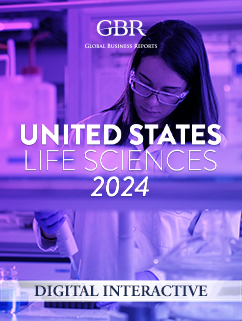
"We are beginning to see California move forward as not two or three individual clusters, but rather as a powerhouse of integrated clusters, and this will continue to be our focus in the future."
Joe Panetta
PRESIDENT AND CEO, BIOCOM CALIFORNIA
What were the main highlights for Biocom California in 2023?
2023 was one of our most successful years in terms of growing our membership. We undertook some refocusing, specifically in our capital development programs, helping our companies find partners and raise money to be able to continue their research and move towards commercializing their products. Biocom California’s investor conference in 2023 was one of the most successful in our history, drawing not only small companies looking for opportunities but also many large pharma companies looking for funding opportunities and partners. We were also busy on the policy side, helping our members interpret the IRA - working with partners to challenge not only the current stipulations of the drug pricing provisions of the IRA, but also to continue to defend against any further legislative action that could potentially impose a greater threat.
Overall, 2023 was one of the most challenging years the biotech industry has faced. We worked to accelerate the success of our 1,700-plus member companies whilst mitigating the significant challenges they confronted. These challenges include the regulatory challenges surrounding the drug pricing requirements under the IRA, which was a threat to the innovative open market system of researching, developing, and commercializing products in the US.
To what extent will the future of life sciences be digital?
From artificial intelligence and big data to wearable devices and implantable diagnostics and therapeutics, the future of healthcare is digital, and California’s tech and life science ecosystems are uniquely positioned to lead this transformation. Converge by Biocom California is a new cross-sector community where the brightest minds in technology and life sciences gather to shape and navigate this new digital frontier in healthcare.
How is California continuing to grow as a biotech center, and what will the state have to do to keep its leading position?
California is unlike any other biotech cluster in the world. The state is the fifth largest economy globally, plays on an international level, and has a US$450 billion life sciences economy. We have continued to see the Los Angeles (LA) cluster thrive over the last few years, with the emergence of many sub-clusters in the region as well. LA is a mega powerhouse of business and can bring in funding and international connections. Biocom California is proud to continue to connect the clusters by actively creating programs that allow for the opportunity to partner, access capital, and purchase supplies and services. We are beginning to see California move forward as not two or three individual clusters, but rather as a powerhouse of integrated clusters, and this will continue to be our focus in the future.
Biocom California’s 10-year strategic plan, launched in 2024, calls for positioning California's industry as a major global player in life sciences in a proactive manner – actively identifying partnership opportunities around the globe.
How do you think the regulatory and policy environment in the US is affecting investment into the biotech industry?
I believe that the regulatory environment is, unfortunately, creating less opportunity for investment, but I am optimistic that we are continuing to see new company incubation, robust pipelines within our biopharmaceutical companies, and our industry fighting back and exploring, within the limitations created by drug pricing controls in the IRA, ways to develop potentially lifesaving and profitable products. A major concern is why in the IRA small molecules are being penalized with a nine-year time limit before negotiation on pricing begins versus a 13-year time limit for large molecules. The small molecules that have been developed or are in development are every bit as promising as the large molecules out there, but due to this shorter time limit, we are already seeing companies financially cutting back on small molecules.
What are Biocom California’s growth strategy and priorities for 2024?
Biocom California aims to enable our members to become more international by bringing international partnership opportunities to California. We also want to get our companies better funded and have built an online platform, which we will launch soon, for VCs and life sciences companies to connect.











